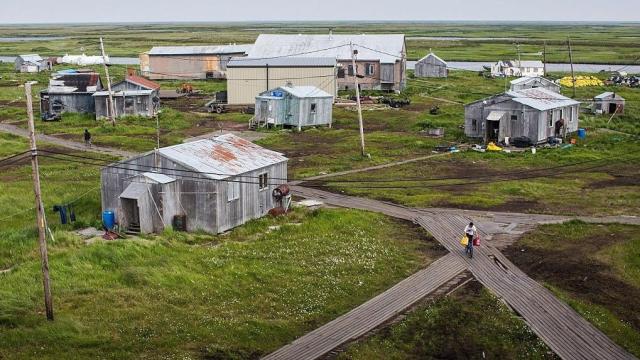Three Native American communities are receiving millions of dollars from the federal government to relocate due to climate change-related risks to their homes, the U.S. Department of the Interior said in an announcement today.
Three communities — one in Washington state and two in Alaska — will each receive $US25 ($35) million from the Interior to help fund the move away from coastlines and rivers that present flood and erosion risks. The first stage of the move will allow the communities to get their most important buildings to more secure locations. The process is called managed retreat, and though it may cost a lot of money upfront, for some communities it is the most cost-effective way to build resilience, the New York Times reported. The new funding comes from investments set aside in the Bipartisan Infrastructure Law and Inflation Reduction Act.
“As part of the federal government’s treaty and trust responsibility to protect Tribal sovereignty and revitalize tribal communities, we must safeguard Indian Country from the intensifying and unique impacts of climate change,” Secretary of the Interior Deb Haaland said in the announcement. “Helping these communities move to safety on their homelands is one of the most important climate related investments we could make in Indian Country.”
One of the villages is Newtok, a community in southwest Alaska struggling with rapid erosion. In 2019, National Geographic reported that flooding, erosion, and thawing permafrost was causing the ground around homes to crumble away. “It gave me goosebumps when I found out we got that money,” Joseph John Jr., a council member in Newtok, told the New York Times. “It will mean a lot to us.” The funding comes just in time: The village is losing about 21.34 m of land a year, according to the Department of the Interior.
The other Alaskan Native village to receive relocation funding is Napakiak, which is in western Alaska near a rapidly eroding riverbank of the Kuskokwim River. The land loss has threatened critical infrastructure, like a water supply well, homes, and the school. The local school has had to hold classes for students in a detached portable unit next to the official building, the Washington Post reported last year. The village has lost an estimated 25 to 50 feet a year, according to the Interior release.
Funding is also helping the Quinault Indian Nation, which currently lives between the Pacific Ocean and the Quinault River. The nation’s Taholah Village is at risk from storm surge and flooding from most sides. They have planned for potential relocation in the past but did not have the funding to push forward with those plans until now.
Eight other communities will receive $US5 ($7) million each from the government for future climate resilience or plan for relocation. They include the Yurok tribe in California, the Passamaquoddy Indian Tribe in Maine, and the Havasupai Tribe in Arizona.
Though relocation physically removes communities from the immediate threats of rapid sea level rise and frequent flooding, it is still very stressful for communities, as the New York Times described. It may take communities years to decide where their new home should be. The Obama administration gave the state of Louisiana millions of dollars to relocate the village of Isle de Jean Charles, and it wasn’t until 2022 that residents began moving to new homes.
